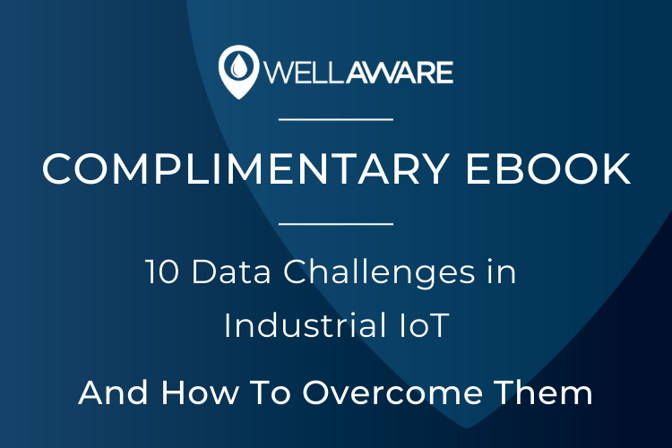
News, Insights, and more on Industrial IoT
Remote monitoring and control systems consist of many interconnected layers of hardware, networks, software, and people. How do you know when it's time for a remote monitoring system upgrade?
On the hardware front, you have the physical assets themselves, the measurement hardware (sensors), processing hardware, and communications hardware. When it comes to networks, organizations need various solutions to enable both local and long-range data transmission. Companies often select several software platforms, either licensed or SaaS, to meet their data visualization and analytics needs. Then, they need installers, integrators, and administrators to ensure everything works for end users.
Companies pursuing digital transformation don’t always think about the full value chain -- the journey that data has to take through various layers before it reaches those who need it. Leaders tend to focus on the upfront costs associated with hardware and software licenses, and only some remember to factor in installation and setup costs.
In our experience, we’ve found that many fail to calculate the true total cost of ownership (TCO) of remote monitoring and control systems. Facility managers forget about life cycle maintenance expenses and critical upgrades, which can end up costing more than hardware and software combined! This is especially true in industrial environments where systems must be certified for applications and environments that pose safety, environmental, and health risks.
Life cycle costs can sneak up on operators for several reasons. Original equipment manufacturers (OEMs) design industrial hardware to last a long time -- multiple decades for certain types of equipment. Distributors typically sell maintenance contracts and extended warranties for the purpose of keeping machines running as long as possible. Industrial executives, including CFOs, COOs, and operational managers, are particularly concerned with extending the useful life of machines to justify the high upfront capital expenditures to install them.
Rarely do organizations think about how much it costs to maintain the systems that support big, heavy, and expensive machinery. Remote monitoring and control systems, just like machines, require maintenance and upgrades.
Under prevailing business models, companies buy remote monitoring and control solutions in pieces from multiple vendors. For example, an organization may purchase hardware from one vendor, networking capabilities from another, software from a third, and so on.
One alternative approach is to buy from multiple “full-stack” IoT providers or system integrators depending on asset interoperability. Going this route can create compatibility issues down the line, but that’s for another conversation.
The problem with the piecemeal approach is that organizations are charged on a “cost-plus” basis for pieces of a broader remote monitoring solution. And these pieces aren’t always designed to work well with one another. Companies end up paying premiums for an inefficient, “Frankenstein” remote monitoring and control capability.
Traditional vendors or distributors typically only sell hardware and software with upfront licenses. Some provide ongoing service contracts, however, it’s common that they don’t fully disclose or explain all the costs clients will incur over the lifecycle of the system. This isn’t necessarily their fault - the reality is that most customers of hardware and software vendors will need to go to additional vendors and integrators to complete upgrades, integrations, and maintenance.
So, what happens when remote monitoring and control systems need upgrading?
Typically, the customer receives an estimate from an integrator or distributor for what it would cost to upgrade all systems at once -- hardware, network, and software. Usually, upgrades in one area necessitate upgrades in another, especially if they are decoupled. Because companies don’t budget these expenses on the front end, and because the cost of upgrades can induce serious sticker shock, the upgrades just don’t get done.
Herein lies the core issue and the reason why your remote monitoring system might be older than your kids (who have probably gone through three iPhone models by now). Leaders don’t consider the total cost of ownership upfront, so they rarely update systems when the time comes to do so.
IT upgrades happen at a rapid pace thanks to “Moore’s Law,” the observation that the cost and size of the chips needed for computing decreases by half every two years. Compare that with industrial equipment, which is designed by OEMs to last decades.
Companies plan for equipment replacements, not monitoring infrastructure replacements. Naturally, leaders wait to bite the bullet to replace monitoring infrastructure until they have to replace their equipment. Consequently, monitoring and control infrastructure gets upgraded once a decade (at best), even though the available technology has evolved far beyond the legacy system.
Why is this a problem?
First, older systems are more vulnerable to cybersecurity threats. They don’t get upgraded, which makes it easier for hackers to exploit known weaknesses. Aging infrastructure is also more prone to failure. As we’ve discussed in other blog posts, the cost to address and amend critical control system failures can be immense!
There is also an opportunity cost associated with leaving legacy infrastructure in place. Teams can be much more productive, safe, and efficient with new-age monitoring solutions. Managers can identify operational issues that were previously hidden and inform higher-level decision-making that impacts overall business outcomes.
Put simply, when industrial organizations wait to upgrade their remote monitoring infrastructure, they miss out on tremendous value.
At WellAware, we use a Managed Services model to deploy cutting-edge IoT remote equipment monitoring and control technology that never becomes obsolete. We guarantee quality, up-to-date data from any machine, and we keep monitoring and control systems running at the highest levels through cost-efficient continuous improvement, maintenance, and upgrades.
Business leaders don’t have to worry about paying premiums for decoupled, non-optimized remote monitoring layers. Instead, they can maximize the productivity of their physical assets without adding operational complexity.
Interested in learning more?

Having a data challenge? You're not alone.
Sign up for our blog and receive a free eBook on the 10 data challenges in Industrial IoT and how to overcome them.
Have a Question?